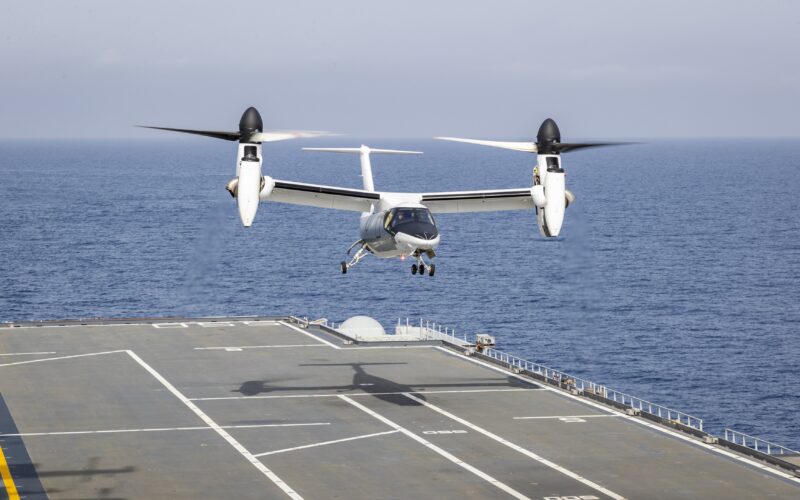The Leonardo AW609 tiltrotor has successfully completed ship trials conducted with the support of the Italian Navy.
During the trials, the fourth AW609 tiltrotor prototype, AC4, showcased approach, deck landing, and touchdown capabilities from the flagship of the Italian Navy, the aircraft carrier ITS Cavour.
According to Leonardo, the trials involved comprehensive testing, including deck landing and takeoff procedures in over 15 different conditions, using a fully synthetic environment and the AW609 development/engineering simulator in Cascina Costa.
With its tilting rotors, the AW609 is capable of vertical takeoff and landing and can reach a top speed of 500 kilometers per hour (270 knots), far superior to a standard helicopter’s performance. Equipped with two Pratt & Whitney PT6 engines, it can cover distances of more than 1,800 kilometers (1,100 miles) while accommodating between nine and 12 passengers.
“Fast rotorcraft technologies continue to be core to our forward-looking capability development and value-proposition in the vertical lift domain, which has been extensively demonstrated by the progress on the AW609 tiltrotor programme,” said Lorenzo Mariani, Co-General Manager of Leonardo.
This initiative is part of ongoing activities by a joint working group established in 2022, comprising Leonardo, the Italian Navy, the Italian Army, and Guardia di Finanza, to evaluate the potential of tiltrotor technologies to complement existing government assets. Currently, the ITS Cavour uses AgustaWestland AW101 medium-lift helicopters
Following the successful ship trials, Leonardo will analyze the collected data to enhance the platform for naval operations. The AW609 tiltrotor has already accumulated over 1,900 flight hours in Italy and the United States.


2 comments
This thing has been in development for I am suggesting 30 years? Numbers don’t add up. Too expensive with lousy payload.
“Do tiltrotors have a future?” – easy to guess such expressions of doubt are all rooted in the history of issues of the famous Bell Boeing V-22 Osprey. Many engineers know that most of these issues of the V22 can directly or indirectly be traced back to the same, single rotor blade issue.
The topic has been broadly discussed, e.g. at the forums of the Vertical Flight Society. The problem can be 100% eliminated by an upgrade of the rotor blades.
Yes, tiltrotors are important for the whole of aviation. Not just for the military. The issues belong to a certain phase of development that is unavoidable for any other new-concept aircraft. (You could bet if Bell stopped production of the V22, then – in no time – a brand new player would appear picking up the ball at the very same point where Bell would have dropped it.)
Presently, the best thing the world can do to save lives is not cancelling the tiltrotor projects. Rather speed up the rotor blade upgrade instead.